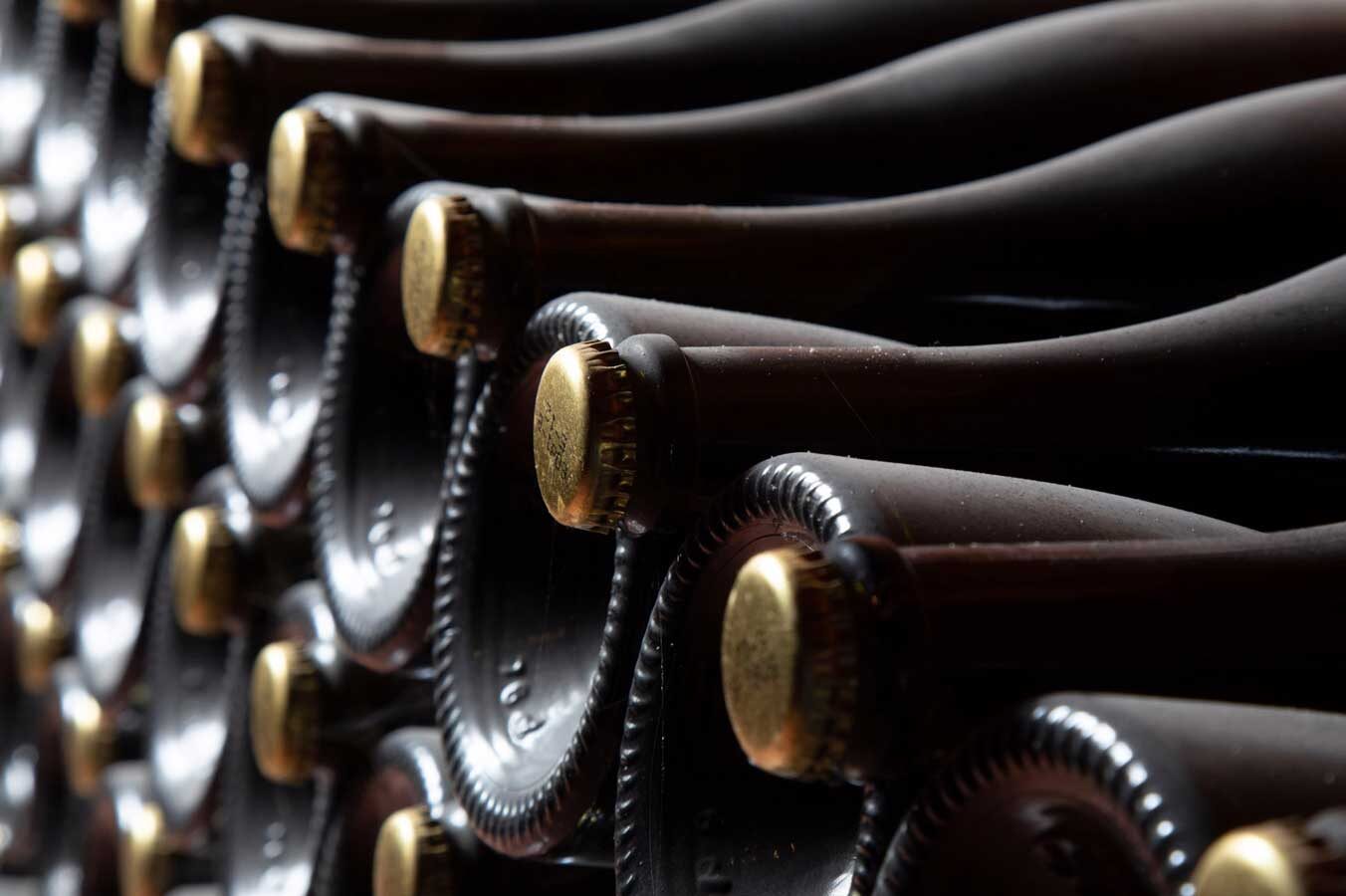Cava is one of Spain’s best known and best loved sparkling wines, or vinos espumosos, and alongside Rioja is one of the country’s most successful wine exports. But over the last decade or so it has been overshadowed by the likes of Prosecco and other, more cheaply made, but more aggressively marketed, sparkling wines. So, what’s special about Cava and why should you give it more than a second look? Well the secret lies in how Cava is made. But before we get to that a little word on geography…
Where is Cava made?
The first thing to say is that Cava is actually a Denominación de Origen (DO) in its own right. But unlike the wines from other DOs, Cava is not made in just one geographical area. It’s true that 95% of Spain’s Cava comes from Catalunya, particularly from the area around the town of Sant Sadurní d’Anoia in the county of Penedès. But there are six other areas of Spain allowed to put “DO Cava” on the label, including places like Valencia, Rioja and even Extremadura.
Geography aside, the main thing that sets Cava apart from many other sparkling wines is how Cava is made.
Grapes used to make Cava
Cava is usually made from a blend of different grapes. The most common blend is a combination of Xarel·lo, Macabeo and Parellada. But other grapes like Pinot Noir, Chardonnay and Monastrell can also be used. The grapes are usually fermented separately and then blended to give the still wine which will form the final basis of the Cava.
That gives winemakers a wide range of options that influence the final flavour and characteristics of their Cava. They can choose which grapes to use, mix grapes from different plots, and apply different fermentation techniques to each still wine. All that means that Cava will give you a wine that reflects both the skill of the winemaker and the essence of where it’s from.
The blending process can take days or even weeks, but once a blend is fixed on it’s time to make the wine sparkle.
How sparkling wines are made
At its most basic level, making sparkling wine involves getting gas into still wine. And the most common way to do that is by taking a wine that has already been fermented once and adding yeast and sugar to induce a secondary fermentation. That secondary fermentation creates carbon dioxide in the wine. If you do that in a sealed container, the carbon dioxide is trapped inside the wine making it fizzy.
In the case of basic sparkling wine, and most Prosecco, this is done using the Charmat or Martinotti method. The process was patented in 1895 by Italian inventor Federico Martinotti. But it’s often actually credited to the Frenchman, Eugene Charmat, who perfected the process in the early 20th century.
Naming aside, the process involves pumping fermented wine into a large steel tank where the sugar and yeast are added to generate a secondary fermentation. Once it’s got some fizz in it, the wine is bottled, corked and sent off to the shops. This method is also often referred to as the “tank” method and is an efficient way to produce large volumes. But the finished product often lacks finesse.
Cava is different.
How Cava is made
Cava is made using the same process as Champagne – the traditional method, or metodo tradicional. This is a more meticulous approach which involves secondary fermentation taking place actually inside each individual bottle. And whilst it takes longer and is more laborious for the winemaker, the result is, in our opinion, far superior to the tank method.
The traditional method used to make Cava can be divided into stages.
Tirage
Firstly, there is the tirage stage. Here, the winemaker takes their final blend of fermented wine and bottles it, adding the sugar and yeast mix to each bottle. The bottles need to be strong so they can withstand the pressure of the carbon dioxide as it builds up during secondary fermentation. Hence Cava bottles are thicker and heavier than standard wine bottles.
Once the sugar and yeast mix has been added, the bottle is capped with a temporary crown cap, like the ones used on beer bottles. This keeps the bottle airtight whilst secondary fermentation takes place but will be replaced later in the process.
Secondary Fermentation
Next up, the bottles spend a minimum of 9 months in a horizontal position undergoing that all-important secondary fermentation and until the desired pressure and level of fizz is reached.
As fermentation finishes the yeasts gradually die off but, importantly, they remain in contact with the wine. That’s a good thing. It helps more complex flavours to develop in the wine which doesn’t happen as much with the tank method. Like with Champagne, when you have a glass of quality Cava, you should expect it to give off subtle aromas associated with baking – things like bread, biscuits, or pastries. Those smells come from contact with the dead yeasts, and they give the wine more character. It’s a good sign you’re drinking a wine made from the traditional method rather than a standard sparkling wine.
That’s great for us, the wine drinkers. But for the winemaker it poses a tricky problem: how to get the sediment out of the bottle so you end up with a lovely clear glass of Cava? The answer is to use a delicate process known as riddling.
Riddling
Riddling is a process whereby the bottle is gradually turned upside down so that all the sediment collects in the neck. This is not a quick process. The bottles are rotated and angled by a small amount every day over the course of about 3 weeks until they are fully upside down with all the sediment collected in the neck. In larger wineries, this can be done with special automated machines, but for smaller producers, the process can be completely manual. That’s a lot of turning!
OK, so the sediment is now gathered in the neck of the bottle. But the winemaker still needs to get the sediment out without losing all that lovely Cava beneath it (or above, given the bottle is now upside down).
The way they do that is through a process called disgorgement.
Disgorgement
Disgorgement is another delicate process, and whilst a very few of the more traditional cellars will still carry it out manually, the majority of modern Cava makers take a more technical, and rather ingenious, approach. What they do is freeze just the neck of the bottle so that the sediment sitting inside it solidifies whilst the rest of the Cava remains liquid. In order to get the solid sediment out, the winemaker simply has to pop off the crown cap, and the pressure inside the bottle forces the frozen sediment to pop out, leaving behind it lovely, clear, sparkling Cava.
As soon as disgorgement has taken place the winemaker will usually top up the bottle with a dash of wine and sugar syrup – a process known as dosage – before it is stoppered with a proper champagne cork, wrapped in the wire mesh or “muzzle” and finished off with a label.
That’s how Cava – and Champagne – are made.
In summary
So, Cava is made using the traditional method which is a more complex, and often more manual one, than the tank method used for Prosecco. And you’ll often notice the difference. All those subtle, more intriguing flavours that can develop in Cava thanks to its time in the bottle are often absent from Prosecco, which in general is a lot more like still wine with bubbles added to it.
If you’re lucky enough to live in Spain, Cava is one of those “essentials” which you always want to have in the drink’s cabinet. It’s obviously a classic for celebrations. But we think it deserves to be drunk more regularly and not only works wonderfully as an aperitivo, but also goes well with a wide range of foods. So next time you want a glass of white with your lunch, but fancy something a bit different, why not pop the cork on a bottle of Cava and let those bubbles delight your taste buds?

Enjoyed this content?
Then why not get a copy of Simply Spanish Wine: A Practical Guide for Wine Lovers? Available now on Amzaon US, UK, Spain and more.

